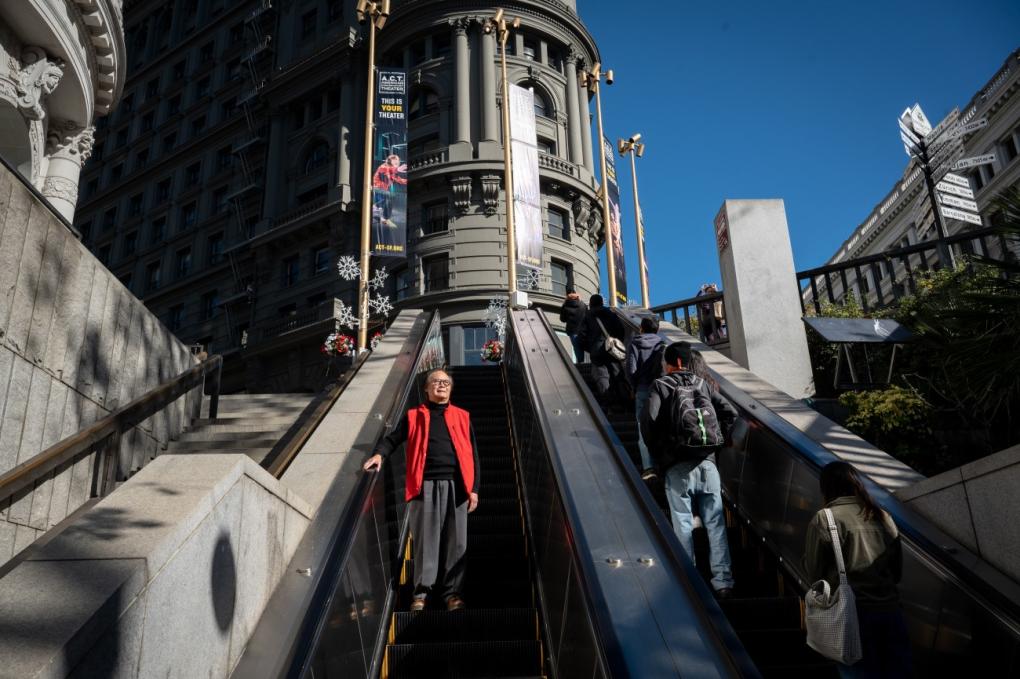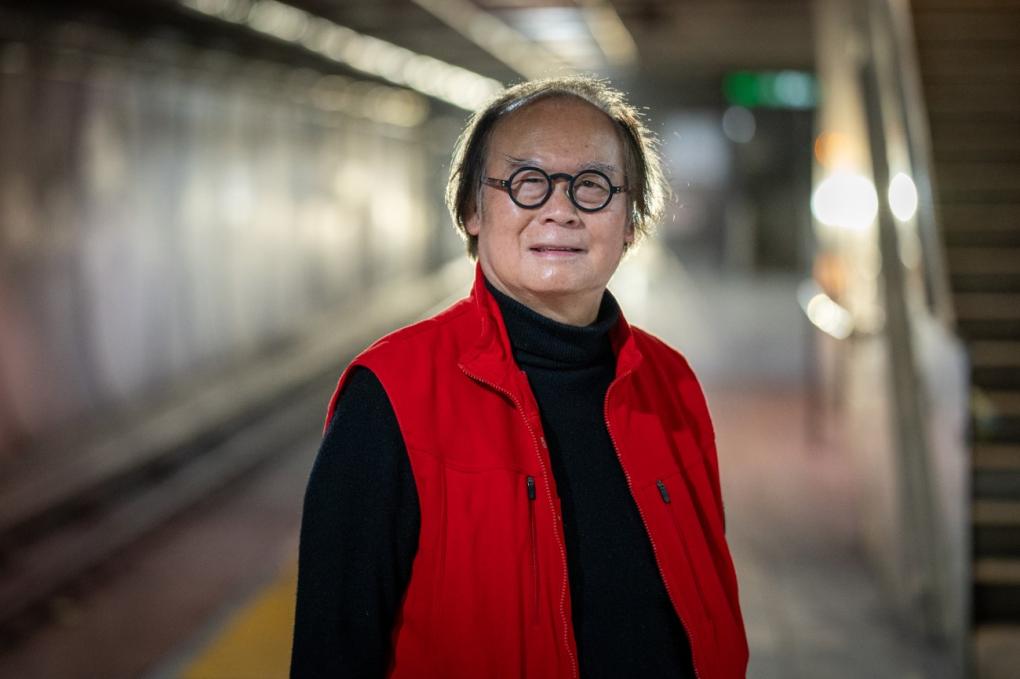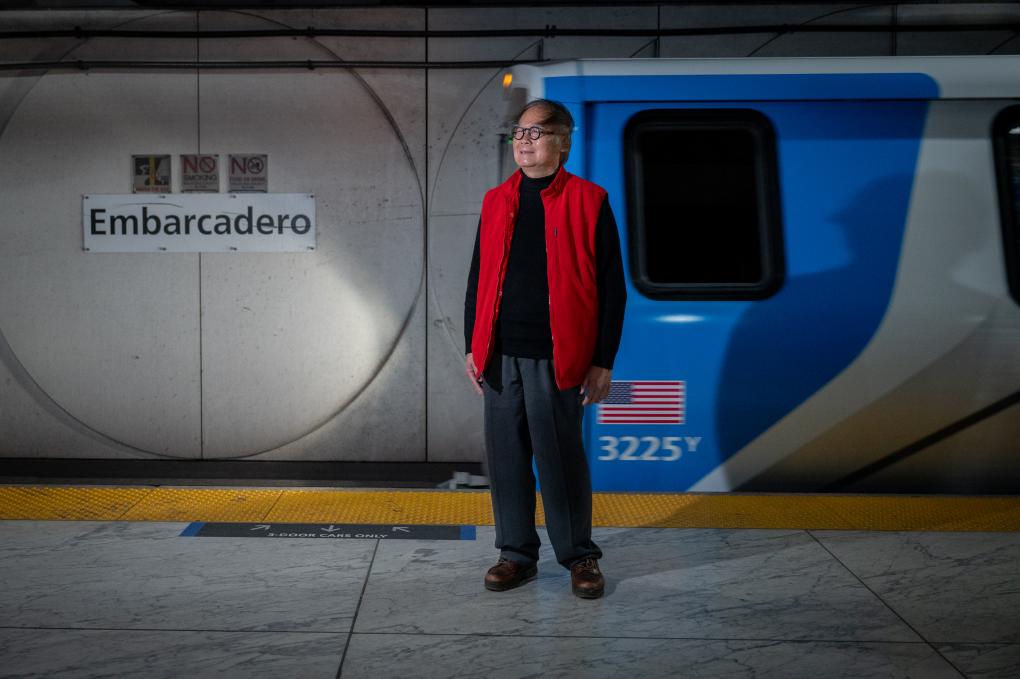Search Results
Behind the scenes with a BART maintenance crew
Catch a glimpse of what we’re doing to make your commute swift and smooth, with a behind-the-scenes tour featuring some of the crewmembers who will be working on the upcoming track maintenance weekend project. Workers will soon be replacing over 1,000 degraded wooden ties and 3,000 feet of worn rail between
BART crashes the SF Auto Show!
Move over new cars, the BARTmobile is in town and it's about to outshine all of you! The BARTmobile will be at the San Francisco International Auto Show at the Moscone Center to show all of the new hybrids how to really save gas, confront muscle cars with some real mighty-mite power and challenge all the new
10 Questions with Michael Cox, BART’s Sustainability Data Expert
 Michael Cox, a Principal Performance Analyst in BART’s Sustainability Department, grew up gardening with his mom and recycling with his dad in New York.
Michael Cox, a Principal Performance Analyst in BART’s Sustainability Department, grew up gardening with his mom and recycling with his dad in New York.
“My parents were farmers when they were kids, and they always taught me the importance of protecting the environment and being one with your surroundings,” Cox said recently during an interview at BART Headquarters.
When Cox was studying environmental science at Stanford University, he realized he was especially passionate about climate change. Fieldwork wasn’t for him – “I just wasn’t very good at it,” he said – so he decided to “attack the issue using a computer, with data.”
Read more about Cox’s unique role at BART and how he uses data to support the District’s sustainability efforts. And check out the 2022 Sustainability Report here, published today, which highlights BART's efforts to support and enhance sustainability within the BART system and region. Says General Manger Robet Powers: "BART is one of the greenest options for Bay Area residents traveling around the region."
1. How long have you worked for BART?
I have worked at BART for 3.5 years.
2. What’s your role at BART?
I am a Principal Performance Analyst in the Sustainability Department. I calculate our energy use, greenhouse gas emissions, water use, and waste generation, and I implement programs that can improve our performance in those areas.
3. If you can remember, what is your earliest memory of riding the trains?
My earliest memory of riding BART was during undergrad. I attended Stanford, and I needed to go to Berkeley to do some research at farmers markets. I took Caltrain to Millbrae and then BART to Berkeley. I remember being confused whether BART was an urban subway or commuter train, but now I know it’s kind of like both!
4. What’s something that might surprise us about your job?
I think a lot of times in the sustainability field, you get pushback from folks afraid of change and adjusting their behavior. We’re really lucky in California that people are already pretty aware of the challenges we face in terms of climate change and environmental pollution. It’s nice to have coworkers and members of the public that are really supportive of the work we do and excited by the progress we’re making.
5. Name your favorite BART station or route and tell us why you like it.
My favorite BART station is Lake Merritt. It was the station closest to me when I lived in Oakland, and I loved how convenient it was to get to downtown Oakland or the lake. There’s a lot of nice scenery in the area.
My favorite line is definitely the Oakland Airport Connector. It’s just nifty to ride on!
6. What do you typically do to pass the time on the train?
Usually, I play games on my phone. I’m playing Wordle or Spelling Bee from the New York Times, or I’m playing Fire Emblem Heroes, which is a strategy role-playing game.
7. What’s on your desk besides your computer?
On my desk at the office, I have a water bottle, lots of pens and pencils – even though I don’t write that much – and I have some art that my mom made. She’s a sculptor so I love having her pieces. I have some other gifts that I received from previous jobs: a framed photo of a Muni bus – I worked at SFMTA before BART – a model BART car, and a stress ball.
8. If you acquired a decommissioned legacy BART car, what would you transform it into?
If I had a bunch of them, I would make an escape room attraction where each BART car is a different task you have to complete.
9. Here’s your chance to brag. What’s something cool about BART you’d like to highlight?
One thing we’re always bragging about is how clean the electricity is that powers our system. In 2022, 100% of the electricity powering the core system came from greenhouse-gas free sources. BART is one of the best ways to reduce your greenhouse gas emissions associated with travel. We’re able to procure our own electricity, and that gives us the ability to negotiate our power purchase agreements to secure renewable and greenhouse gas-free energy.
10. What’s the most important lesson you’ve learned at BART?
You have to be patient. We work for a public agency and that means we have to get input from a lot of stakeholders before we make decisions, and that’s because we need to ensure we’re using our taxpayer funds appropriately. If you think something is going to take time, add a little more for a buffer and make sure you’re engaging with as many people as you can. It’s much easier to get buy in from different groups on things if they know what’s coming down the pipeline and feel included when decisions are made.
BART launches online open house for community feedback on access improvements to BART in El Cerrito and Berkeley stations
BART has launched an online open house to seek community feedback for access improvements to BART from El Cerrito Plaza to Ashby stations. This event opened on July 2 and will be available until August 20 at www.bartberkeleyelcerritocap.participate.online . The open house will give community members the
BART Survey & Contest - Official Rules
The following Official Rules apply to the 2015 BART Survey & Contest. NO PURCHASE NECESSARY TO ENTER OR WIN. A PURCHASE OR PAYMENT OF ANY KIND WILL NOT INCREASE YOUR CHANCES OF WINNING. VALID ONLY IN CALIFORNIA. Void where prohibited or restricted by law. ANY PERSONAL INFORMATION YOU PROVIDE WILL BE USED FOR
Everything found in BART’s 30-year-old time capsule
Top 22 BART accomplishments in 2022
2022 was focused on welcoming riders back as people began to venture out, attend large events, and return to the office. Our staff worked tirelessly to put out service to keep the Bay Area moving, adapt to the new normal, and celebrate our 50th anniversary. 2022 was not without its challenges such as
BART Connects: BART gave a civic architect “a sense of what was possible” for urban design

Howard Wong pictured at Powell Street Station.
Do you have a favorite BART memory or story to share? Email a short summary to BART Storyteller Michelle Robertson at [email protected], and she may follow up to schedule an interview.
Howard Wong was born and raised in San Francisco, and like many locals, he depended on public transportation to travel. He remembers well the “old, shaky streetcars and rickety buses” that ferried citizens around the region, and so too, he remembers that it “wasn’t always a pleasant experience.”
A few years after BART opened, he graduated with a master's degree in architecture and design from UC Berkeley. In the program, Wong and his classmates studied the new BART system – its design, its construction, its principles. “It was the biggest project around,” he said. “And it gave you a sense of what was possible.”
When BART first opened in 1972, Wong, who was living in Berkeley, used it mostly to travel around the East Bay. That is, until the Transbay Tube opened in 1974, and he took a joy ride from Berkeley into San Francisco.
“Going through the tunnel for the first time was quite an experience,” he said. “Your ears pop, and it feels like you’re rolling really fast. It gave you the sense of entering this new Space Age era of transportation.”
Wong’s experiences on BART left a lasting impact on him. He said the transit system helped shape his “democratic sensibilities on urban design."
“No matter your class, you had a sense that you were getting special treatment when you rode the trains,” he said.
“You really felt like you were a part of this democracy of benefits,” Wong continued. “You're sitting on a train with all the commuters who seemed much more affluent with their suits and ties and briefcases, but you’re right there on that train with them.”

Wong went on to work for a series of Bay Area architectural offices before he was hired as an architect for the City and County of San Francisco.
Wong still remembers his trips from North Beach to San Francisco State, where he earned his undergraduate degree, by way of the old surface M streetcar, a ride that took at least an hour each way. He said when the BART tunnels were built under Market, as well as the Muni Metro tunnels above them, “it was revolutionary.”
He also noticed that after BART opened, smaller bedroom communities quickly transformed into prosperous suburbs – a metamorphosis he attributes largely to the transit system, which enabled suburbanites to easily and affordably commute into San Francisco. He also noticed more businesses, especially higher-end department stores, set up shop along Market Street.
Now retired, Wong remains an avid BART rider. He often takes the train to explore cities outside his hometown as well as to regular haunts around Mission Street and the Berkeley campus. As of late, he’s taken BART to visit Fremont, Orinda, and Walnut Creek. Recently, he rode BART to Berryessa/North San Jose Station to check out the San Jose Flea Market, which he learned about from a BARTable article.
In his 51 years of riding BART, Wong said the public is essential in ensuring the system is around for generations to come. He encourages Bay Area residents to not “forget about transit.”
“You don’t have to take it all the time, but ride it every once and awhile,” he said. “It takes advocacy and support, as well as revenue to improve local transit and to keep it running. The public can help give it a boost, too.”

About the BART Connects Storytelling Series
The BART Connects storytelling series was launched in 2023 to showcase the real people who ride and rely on BART and illustrate the manifold ways the system affects their lives. You can follow the ongoing series at bart.gov/news.
The series grew out of BART's Role in the Region Study, which demonstrates BART’s importance to the Bay Area’s mobility, cultural diversity, environmental and economic sustainability. We conducted a call for stories to hear from our riders and understand what BART means to them. The call was publicized on our website, social media, email blasts, and flyering at stations. More than 300 riders responded, and a selection of respondents who opted-in were interviewed for the BART Connects series.